
The great grayling fishing in Älvdalen draws fly fishers from all over Sweden, but many remain unaware that the area also offers excellent trout fishing. Älvdalen is Swedish and literally means ”the valley of rivers”.
When it comes to my home water, Österdaläven, it’s mostly known for its large population of grayling, which, as we all know, is a great fish to chase with the fly rod. Also, they are quite willing to rise to a well-presented dry fly, which most fly fishers appreciate. The excellent grayling fishing has pushed the trout a bit in the background. The trout population has been under pressure by a big dam and timber rafting. They have survived and the population has grown strong and offers high-quality fishing.
By Stefan Larsson // Images by Stefan Larsson & Morten Valeur

Classic stalking
Österdalälven is a wide, shallow river, mainly with gravel and rocks on the bottom. This makes it very easy to wade, but even so, you must of course respect the water and wade carefully. Casting shadows that spook the trout is another reason to wade with caution. If you want to succeed catching a trout in Österdalälven, time is the keyword. It takes a good measure of patience, planning and caution. It’s so tempting to walk right out as soon as you spot a rise, but if you do, most often it’s over before it even began.
Instead, it’s a waiting game – observe one more rise and then another one. Stalk softly as you approach the fish – sneak up on it. Maybe wading isn’t even necessary. If you avoid spooking the trout, it might move so you can reach it from the bank.
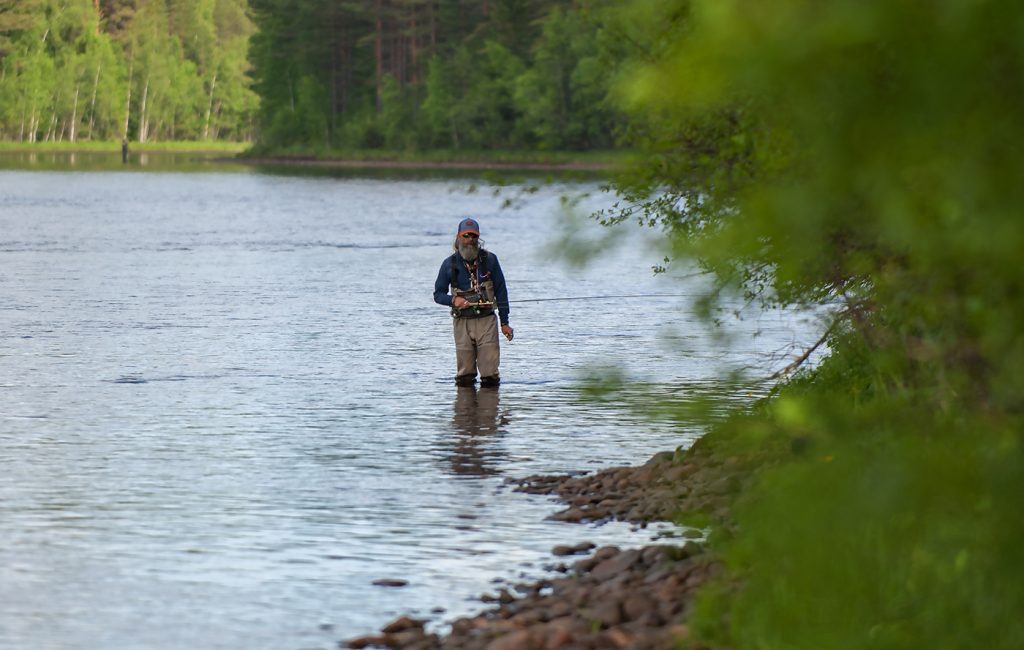
Careless wading drastically reduces your chances of good fishing. Too often I see fly fishers wade out in the middle of the river to a spot that looks good, seen from the bank. I can guarantee that every single trout within 100 meters is spooked and gone before the fly fisher even sees it.
I live by and guide on the river, so I have more hours on the river than most, but I’m also convinced that most make more casts than I do. I cast only when I know what I’m casting to.
As on most waters, upstream casting is the golden rule. Trout always have their heads against the current, and if you approach from downstream and wade carefully, you can get quite close to a feeding trout. The fewer casts you need, the less risk of spooking the fish with a bad cast.
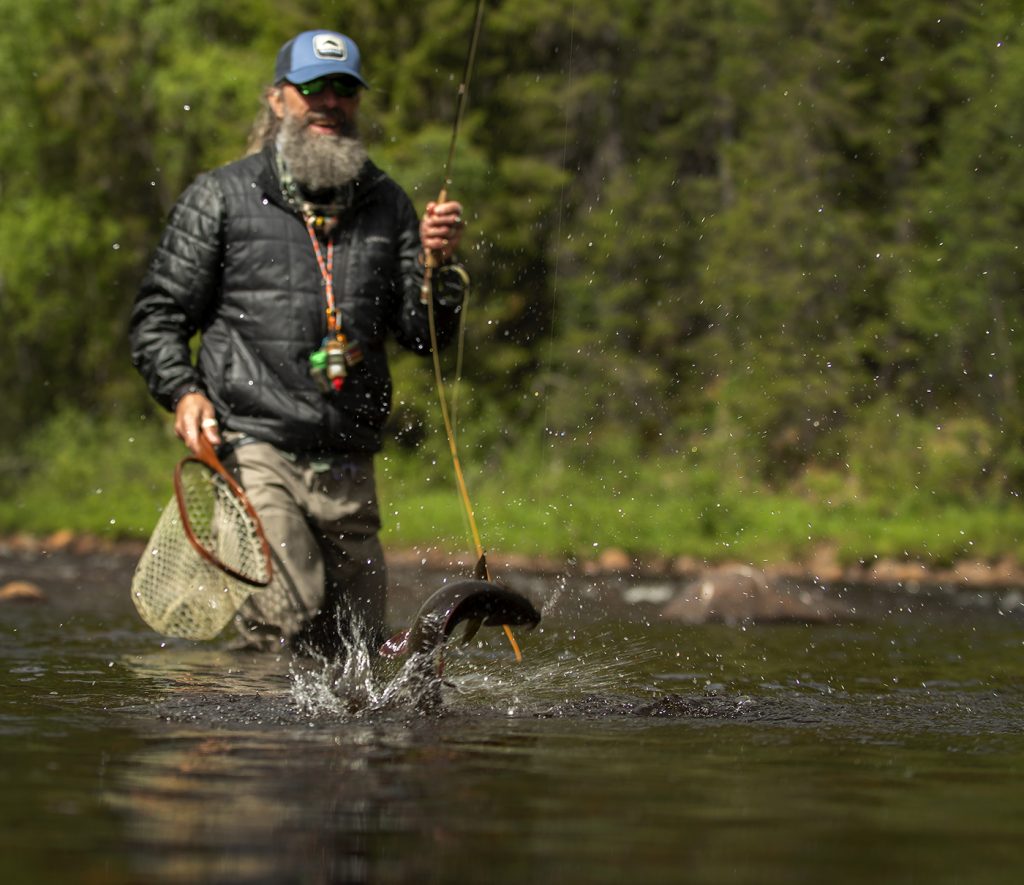
Gear for small flies
The river has a rich insect fauna, yet it’s dominated by the smaller species. Apart from the Yellow May Dun hatch (size 12-14) I rarely fish anything larger than a size 16. There’s also a caddis that is best imitated in size 12-14 hooks, and that can be the right fly on certain days. However, the smaller mayflies dominate the insect fauna in the river. Small flies mean thin and long leaders, especially when targeting these spooky trout. 11-12’ leaders with 0,12 and 0,14mm tippet.
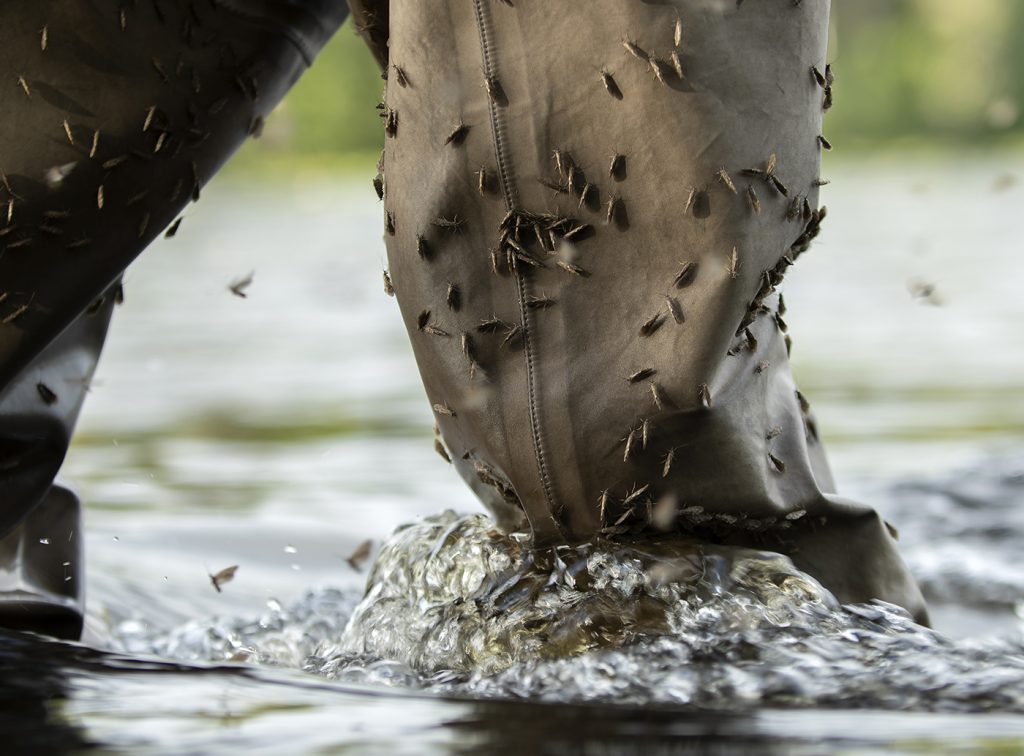
Plenty of insects
The river is rich with both mayflies and caddis and that means that season and time of day play an important role in when we should choose to fish. During the early summer, the table is set well and trout are far from selective eating almost anything that comes by. In June, almost all species hatch at the same time and that sometimes complicates the choice of fly, but then again, no one ever said it would be easy.
Even though day fishing in June can be good, my recommendation is to concentrate your efforts on mornings and evenings. In the morning, the trout are sometimes surprisingly close to shore in shallow water, carefully sipping on the early hatches or spinners from the night before. On these occasions, the trout can be notoriously difficult, so it’s imperative to stay calm and take a close look at what they are feeding on. Sometimes just casting the wrong fly is enough to spook a trout. Their behaviour can be much the same during the evening, but the caddis hatch that often occurs here makes them a little easier to catch. Caddis present a proper mouthful for a trout, and sometimes they forget how spooky they really are.
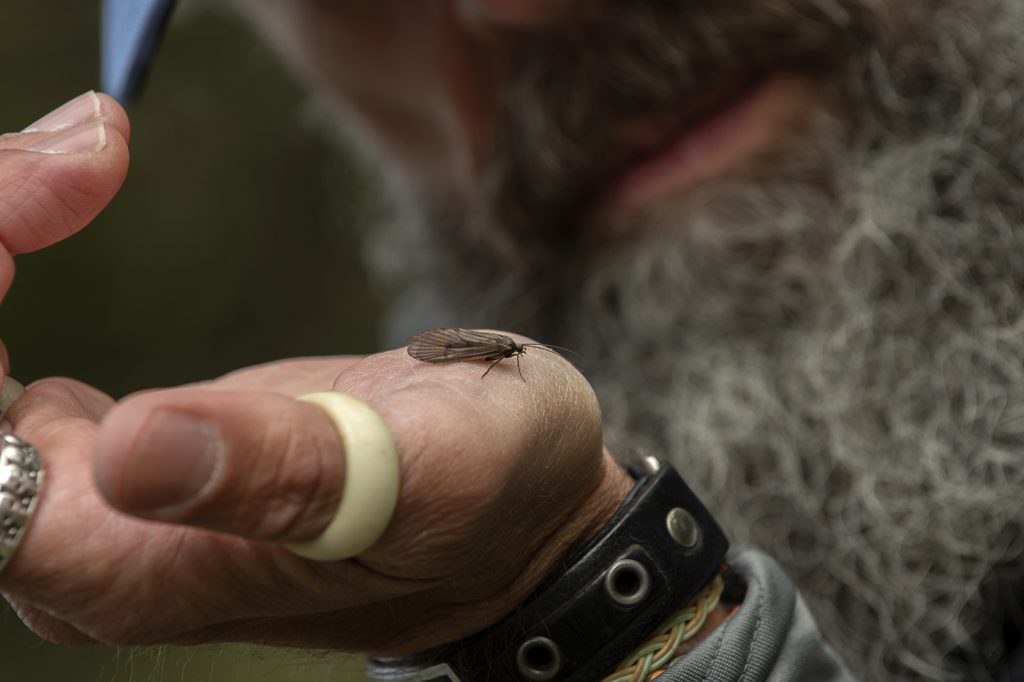
Streamers in the night
July is the hottest month of the year and fly fishers should simply sleep in and relax during the day. More than ever it’s evident that trout simply do what they can to avoid the sunlight in the clear water.
But what about streamers – can you catch the bigger trout in the river on a streamer? Of course, but it takes an effort to find the large “meat eaters”. The right time to tie on a streamer is usually when the sun sets behind the forest. Yet sometimes you have to fish all the way into the middle of the night before trout start feeding. They are less spooky in the dark and when feeding they can cover quite large areas. And sometimes they will enter quite shallow water. Make sure your boots are tied well, because you can expect to stumble every now and then in the dark.
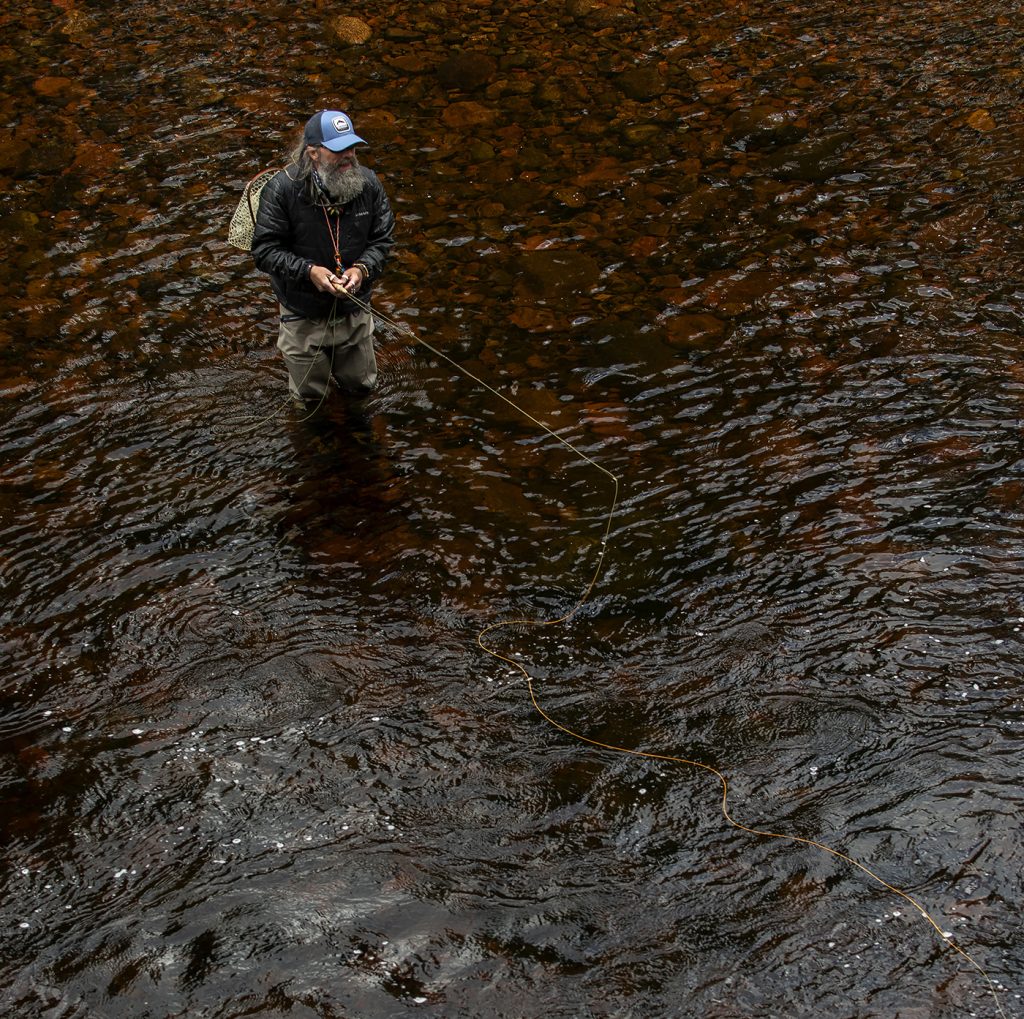
Rotälven – a paradise
Just to the north of Älvdalen, the smaller Rotälven branches off with its swift currents. This forest river has its spring several smiles further up the mountains and then tumbles down through cliffs and gorges before entering the valley. Cliffs, rocks, and gravel provide a fitting summary of a long stretch of this little river. There are plenty of trout, but they are smaller than those in Österdalälven. This is not the river to visit for trophy trout, but for the exquisite, beautiful wilderness, where you become aware of how small a part of the bigger machinery you really are. The beautiful surroundings often take my attention off the fishing.
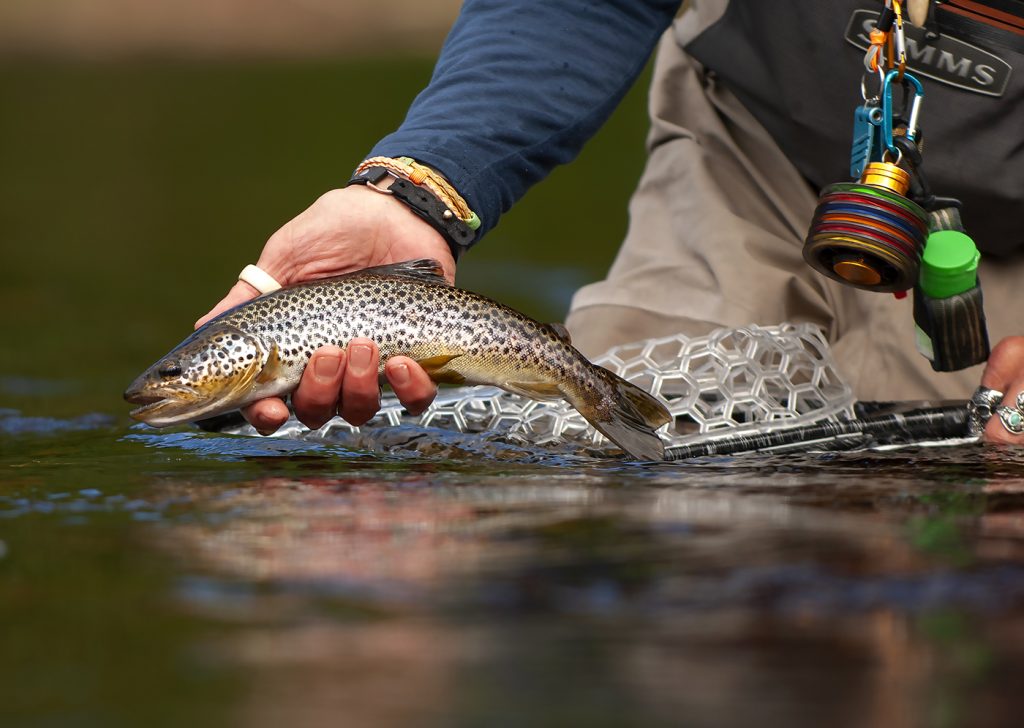
Trout that hook themselves
Rotälven flows fast through the valley. The river is shallow and runs over patches of gravel and often there’s only room for one fly fisher. If two venture up, the best practice is to take turns on the fish. Taking turns is a great way of fishing. You can learn from watching others. And sharing the experience with your best friend makes for a perfect day.
The fishing requires many, short casts in the fast current and several eager anglers have missed the first 15 strikes in these waters. The fishing demands your full attention and losing your attention for just a second will result in missed fish. The trout in these fast mountain waters are used to reacting in a flash. They must in order to stand even the slightest chance of catching their prey. This often results in the angler striking way too fast trying to hook the fish.
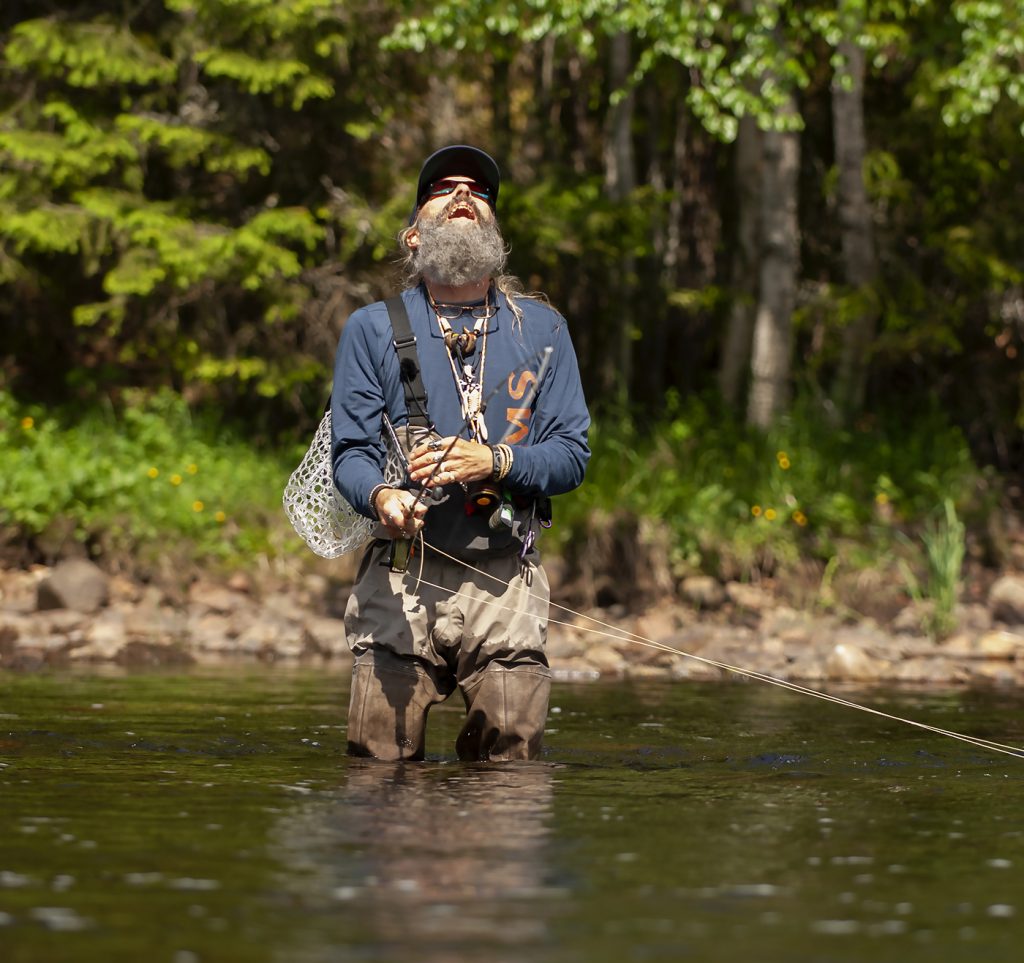
The best tactic is to take it easy. As the trout turns on the surface after grabbing the fly, it’s almost upside down already and turns immediately toward the bottom again. This means that, as the fish returns to its lie, 3 out of 4 will hook themselves so long as the fly fisher keeps contact with the fly. Usually, it’s enough to slowly raise the rod tip to tighten the line. If we pull back as fast as the trout turns, the result will be a missed fish.
As in Österdalälven the small flies should be fished on thin tippets, but you rarely need a particularly long leader. A long leader can “hang” in the swirls and be counterproductive in terms of presenting a drag-free drift in the small, fast currents. I recommend a 9’ leader instead. A handful or two of CDC ’n’ Elk, some small Baetis-imitations in sizes 18-24 and a small handful of Yellow May Duns is fine for the season.

A lot to discover
There are other waters in the area around Älvdalen too. If you drive out the gravel road to the west of the small village and carry on for a while, you reach Vanån and Tennån. These small rivers are different to the ones on the north side of the valley. Small and slow, these rivers work their way through ancient, deep forests and bog areas and glides with swift water quickly change to slow water with small pools.
Vanån and Tennån are even smaller than Rotälven and hold a good population of trout. Although generally smaller, every now and then a real trophy trout is caught. Because the rivers are slow, and because of the landscape they pass through, there are parts with sandy bottom and here, the big mayfly, the Danica, thrive. The Danica is completely absent in the other rivers and streams. Apart from the Danica, which hatches for a couple of weeks in the middle of June, the insect fauna is the same as on the other rivers and streams. The caddis tend to be bigger and darker in colour, though.
Trout fishing in these areas is difficult and demanding on the fly fisher. I’m not referring to Iron Man stamina or extreme distance casting skills. No, common sense and a good deal of patience is what’s required. Jumping about and casting here and there leads to nothing. Observe the trout and learn from their behaviour. Have a chat with them and learn about their life in the river.
If you can sit down and have a chat with a trout for an hour or two, without taking a cast, you can make your approach and figure out how to catch it. Difficult? No, not always. Now and then the fishing is just as simple and straight forward as you sometimes hope for. So why not consider visiting us already this summer? I can promise that we’ll take good care of you.
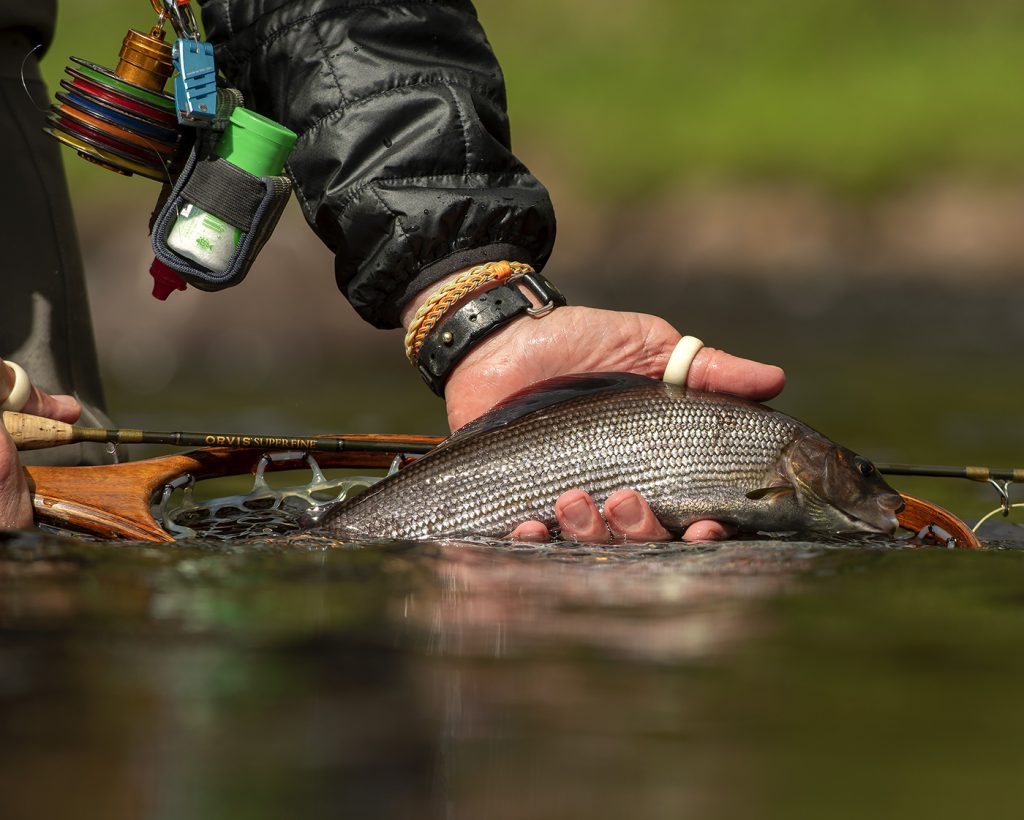
Älvdalens Fiskecenter
Fly shop and guide service.
Situated in the small town of Älvdalen, on the river Österdalälven in central Sweden.
Fly fishing for trout and grayling: Main season, May – September.
Website: www.alvdalenfiske.se
E-mail: info@alvdalenfiske.se
The Wicked or Stefan Larsson is a real trout-bum and dryfly expert – have a look at him tying of his favorite patterns for his trout and grayling fishing here:
Five Shades Of Grey – tied by Stefan Larsson
Olive Molly – by Stefan Larsson
And if you want more of Stefan – check out this little portrait we have done about him and his passion for trout and dryflies.
